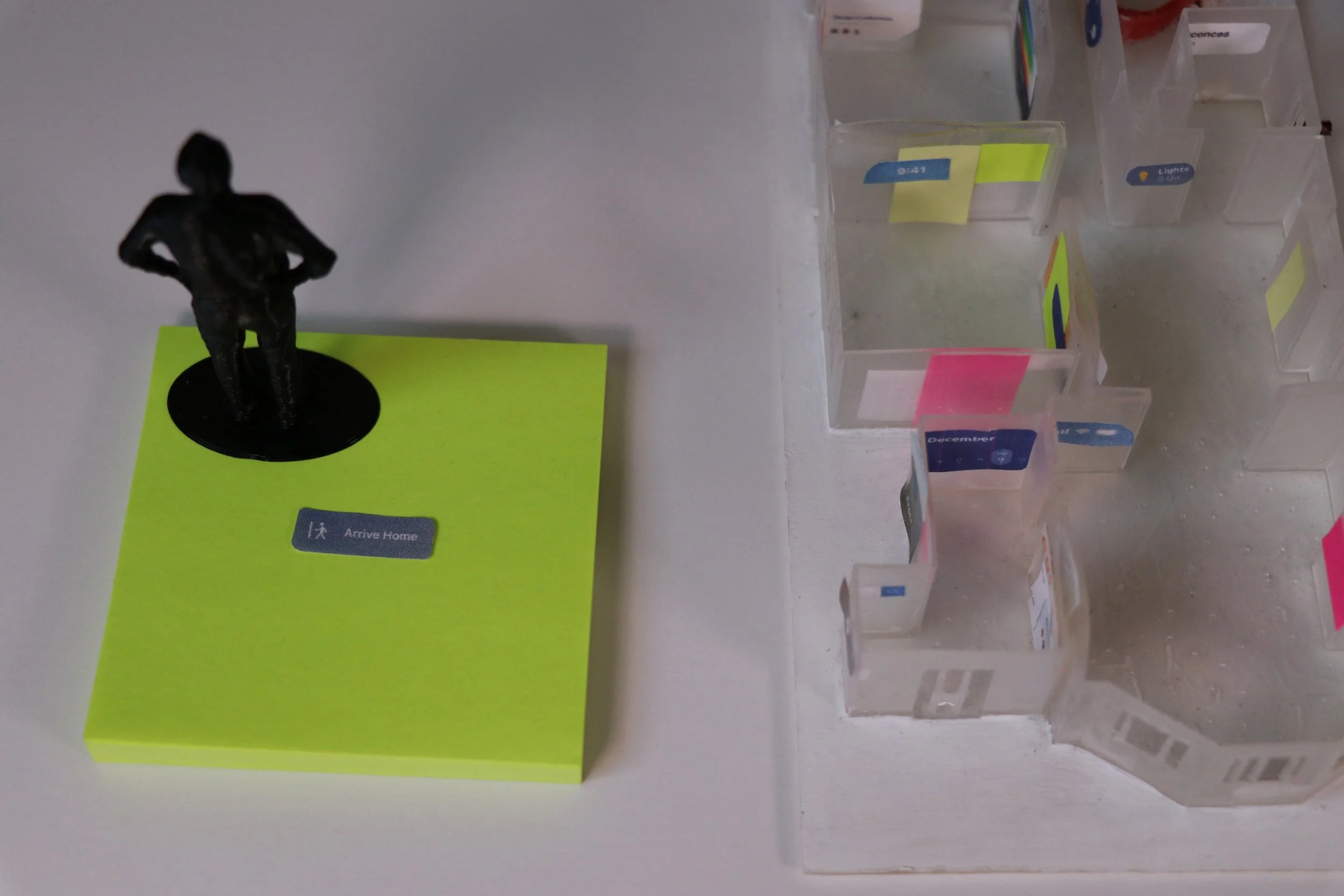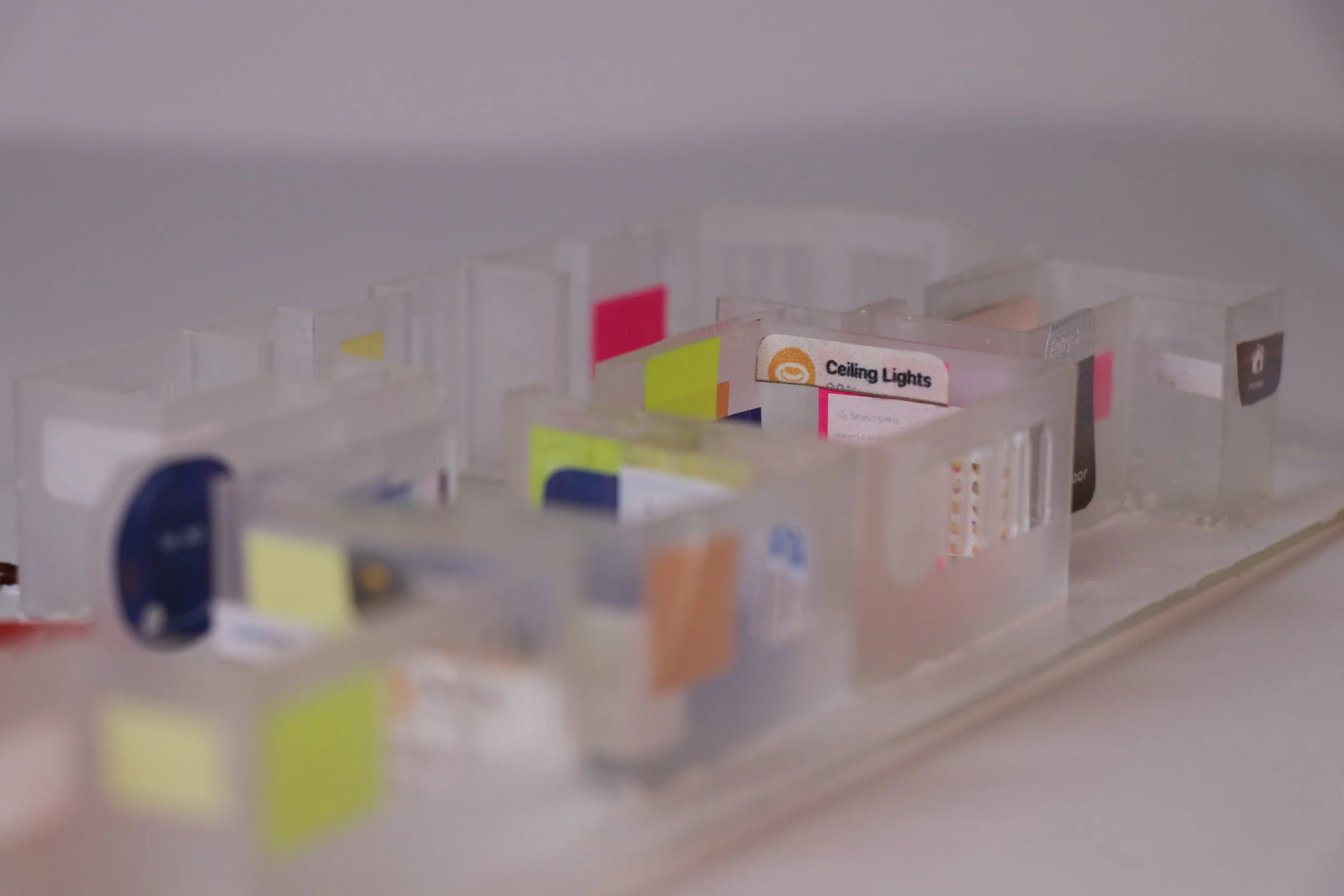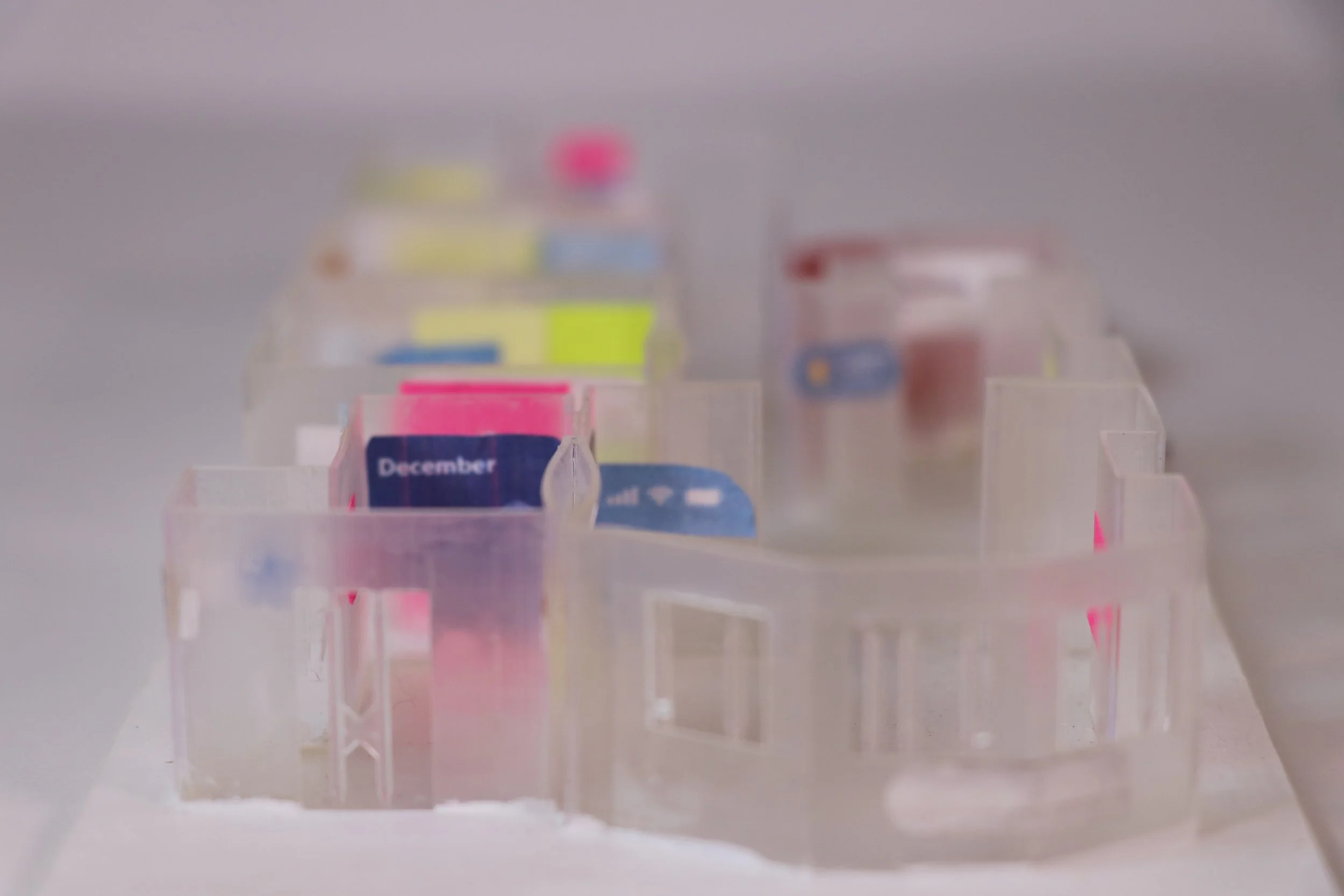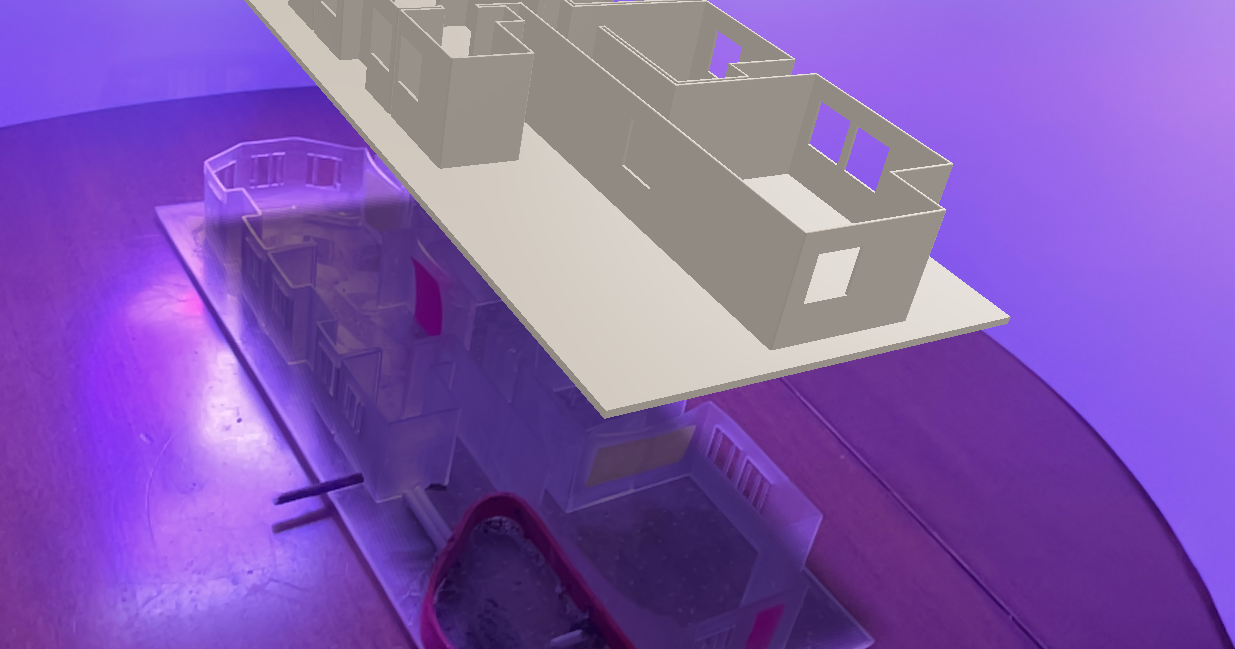Interstice
Year : 2022 - 2023
Role : Individual
Tools : Unity, Adobe Illustrator, Adobe Aero, Rhino 3D, Sketchfab, Polycam, Spline, MidJourney AI
Skills : Spatial UI/UX, Augmented Reality Experience Design, Roadmapping
Reimagining and creating near futures for immersive experiences using persistent Augmented Reality (AR)
interstice 1. a space between things or events
(1) A 3D printed model of home and Sol Koffler gallery, RISD (2) Animation rendering of the gallery representing how spaces can be digitized and used for immersive indoor experiences (3) Actual presentation at galleryCONTEXTThe dominant domestic interface today is the screen, which has multiplied within the home since the emergence of the television in the mid-20th century. The spatial dimension of computing within the home is not fully captured by these interfaces. Limitations of current metaverses highlight the need for value-driven experiences in the context of smart homes, emphasizing the importance of bridging the gap between entertainment and the practicality of everyday living.
Connecting problems faced by user and the purpose to extend realityPROCESSIn order to bring the concept of spatializing thoughts and information within a home setting to life, I decided to create a 3D printed model as a prototype. This prototype served as a tangible representation of the envisioned system through a detailed study of inhabitants' behavior patterns, widget preferences, and phone and media usage. Inhabitants of the model were positioned in locations that reflected their usual presence within the home. This allowed for a realistic simulation and observation of how they would interact with the spatialized system.




WORKSHOPFirstly, I gathered a diverse collection of photos depicting participants' workspaces to better understand their preferences regarding objects, people, and devices utilized in their daily routines. In conducting a workshop focused on augmenting home settings, I employed a user-centered approach to ensure maximum engagement and effective results.
Throughout the workshop, I facilitated discussions and encouraged participants to share their insights, experiences, and challenges. By the end of the workshop, participants had successfully created personalized spatialized information systems within the home setting, tailored to their specific requirements.



PROTOTYPESCreating prototypes for the AR system was a multifaceted journey, enabling to craft both visual and functional prototypes through experimentation.
Visual : Using generative AI tools ChatGPT, Midjourney AI and RunwayML allowed to explore and refine the visual aspects of the AR system. Figma and Bezel served as invaluable tools for designing interfaces that seamlessly integrate within the extended reality (XR) environments. Through wireframing, I structured the layout and interaction flow, enabling a coherent and intuitive user experience.
Functional : To foster user engagement and iteration, I utilized interactive web-based publishing via platforms like Spline and Adobe Aero. Image + object recognition and tracking enabled interfaces to emerge on cue, responding to the physical surroundings contextually. Arriving at these prototypes of digital twins after 3D scanning, 3D modeling and even 3D printing users’ personal and work spaces, I have tried bringing personalization at the fore to give the user a true sense of digital autonomy.








Bridging the gap between a smartphone and a smart home, this AR-based system empowers users with timely information, personalized assistance, and automation capabilities. By simply pointing their AR-enabled device at a specific area or object, a virtual interface overlays the real-world environment, providing an interactive display to pair devices and personalize functionality. It becomes a virtual companion that assists users in their daily routines, optimizing energy usage, scheduling tasks, and enhancing overall efficiency within the home environment.
This fusion of mixed reality and generative AI reimagines the spaces we call home through prototypes by placing humans at the heart of an IoT ecosystem, to prioritize well-being and productivity in the midst of a digital renaissance.

Product Positioning & Mindmapping
*The prototypes and interfaces maintain smartphone hardware familiarity while seamlessly adapting to mixed reality headsets and smart glasses for a consistent user experience.Read full book here↗ Interstice_Thesis Book





